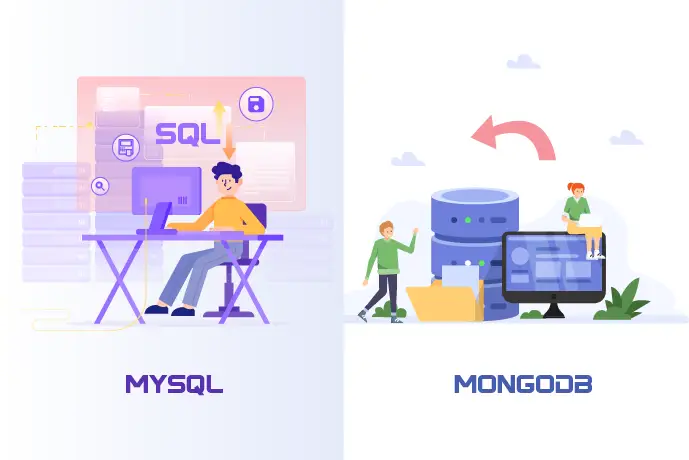-
+91 97117 68186

MySQL and MongoDB are both popular database management systems, but they differ in their architecture, data models, and use cases. Here's a breakdown of the key differences between MySQL and MongoDB:
1. Data Model:
MySQL:
Relational Database Management System (RDBMS): MySQL follows a traditional relational database model, where data is structured into tables with a predefined Strategy.
Structured Data: It works with structured data and enforces a predefined Strategy, ensuring that data sticks to a specific structure.
MongoDB:
NoSQL Database: MongoDB is a NoSQL database, which means it doesn't rely on a fixed Strategy. Data is stored in flexible, JSON-like BSON documents, and each document can have a different structure.
Stragegy-less: MongoDB is Strategy-less, allowing for dynamic and flexible data models.
2. Architecture:
MySQL:
Table-Based: MySQL stores data in tables and uses SQL (Structured Query Language) for queries.
ACID Compliance: It follows the ACID properties (Atomicity, Consistency, Isolation, Durability), ensuring transactional integrity.
MongoDB:
Document-Oriented: MongoDB stores data in BSON documents, where each document represents a record with key-value pairs.
CAP Theorem: MongoDB prioritizes availability and partition tolerance over consistency, following the principles of the CAP theorem.
3. Query Language:
MySQL:
SQL Queries: MySQL uses SQL for querying, which is a standardized language for managing relational databases.
JOIN Operations: Supports complex JOIN operations for querying data from multiple tables.
MongoDB:
MongoDB Query Language: MongoDB uses a JSON-like query language that allows for flexible and expressive queries.
No JOINs: MongoDB supports embedding documents and referencing for handling relationships, eliminating the need for traditional JOIN operations.
4. Scalability:
MySQL:
Vertical Scaling: MySQL traditionally relies on vertical scaling, where you increase the power of an existing server by adding more CPU, RAM, or storage.
MongoDB:
Horizontal Scaling: MongoDB is designed for horizontal scalability, allowing you to distribute data across multiple servers or clusters.
5. Use Cases:
MySQL:
Structured Data: Ideal for applications with structured data and clear relationships between entities.
Transactions: Well-suited for applications requiring ACID compliance, such as financial systems.
MongoDB:
Flexible Schemas: Suitable for projects with evolving or dynamic schemas, where data structures may change over time.
Big Data and Real-time Applications: Often used in applications dealing with large amounts of unstructured data, such as content management systems, IoT, and real-time analytics.
6. Community and Ecosystem:
MySQL:
Mature Ecosystem: MySQL has been around for a long time, resulting in a well-established and mature ecosystem with extensive community support.
MongoDB:
Growing Ecosystem: MongoDB has gained popularity in recent years, and its ecosystem is rapidly expanding, with good community support.
Conclusion:
The choice between MySQL and MongoDB depends on your specific use case, project requirements, and the nature of your data. If you need a rigid structure and transactions with clear relationships, MySQL might be more suitable. On the other hand, if you're working with dynamic data and need flexibility in your schema, MongoDB might be a better fit. Ultimately, both databases have their strengths, and the decision should be based on the unique characteristics of your application.
